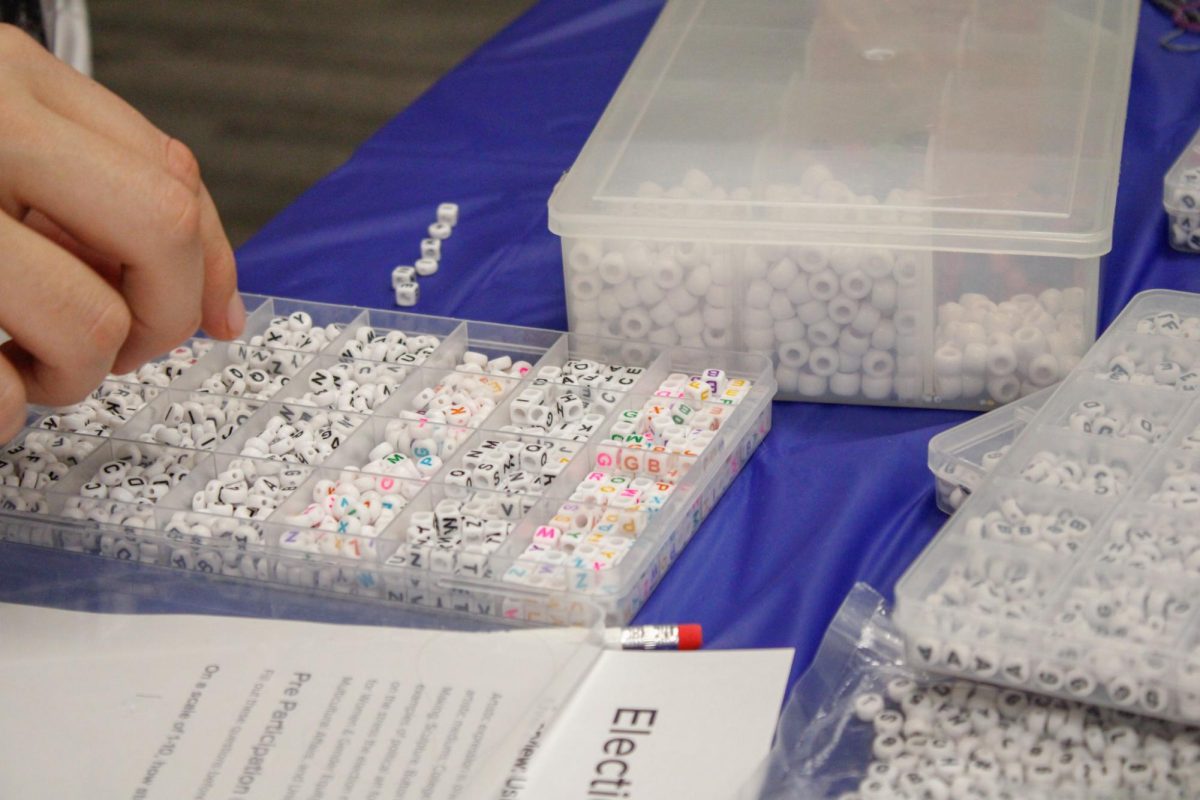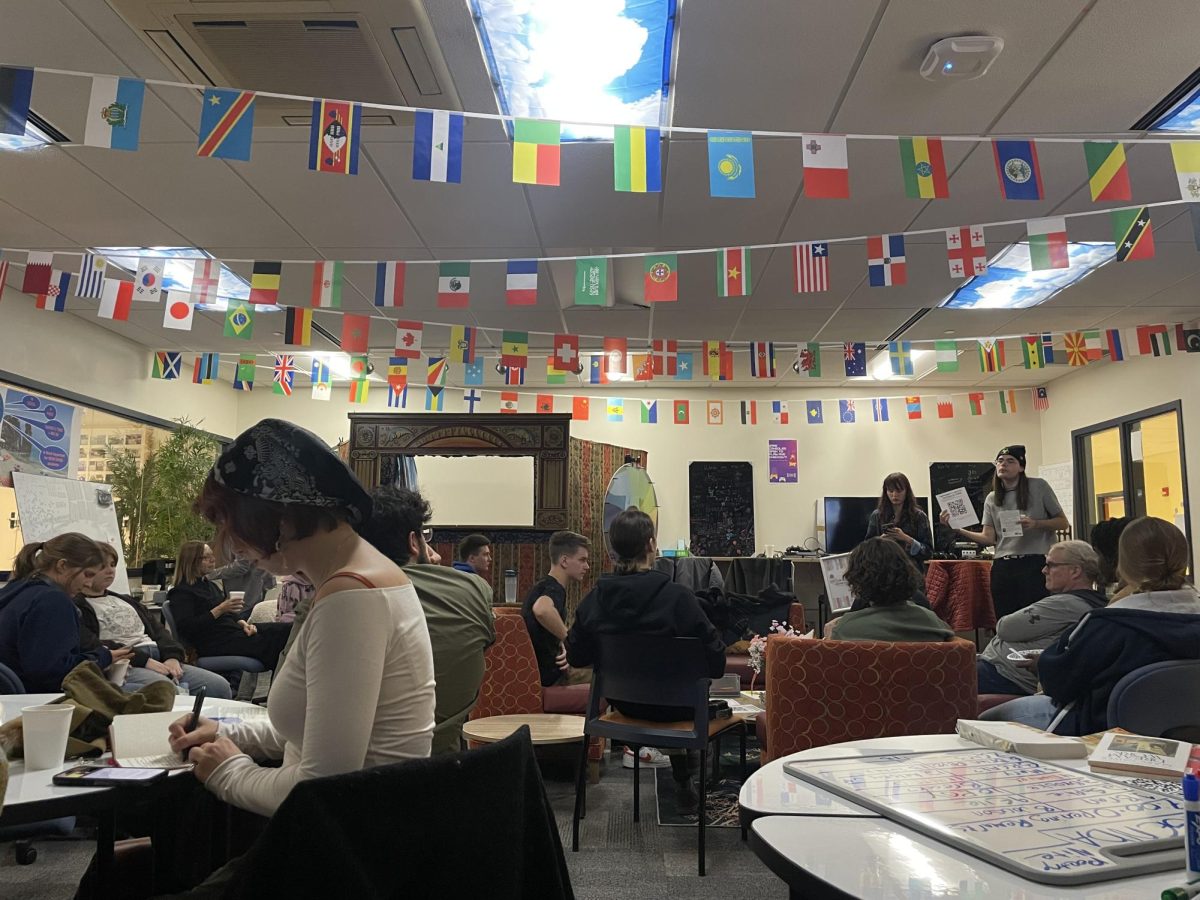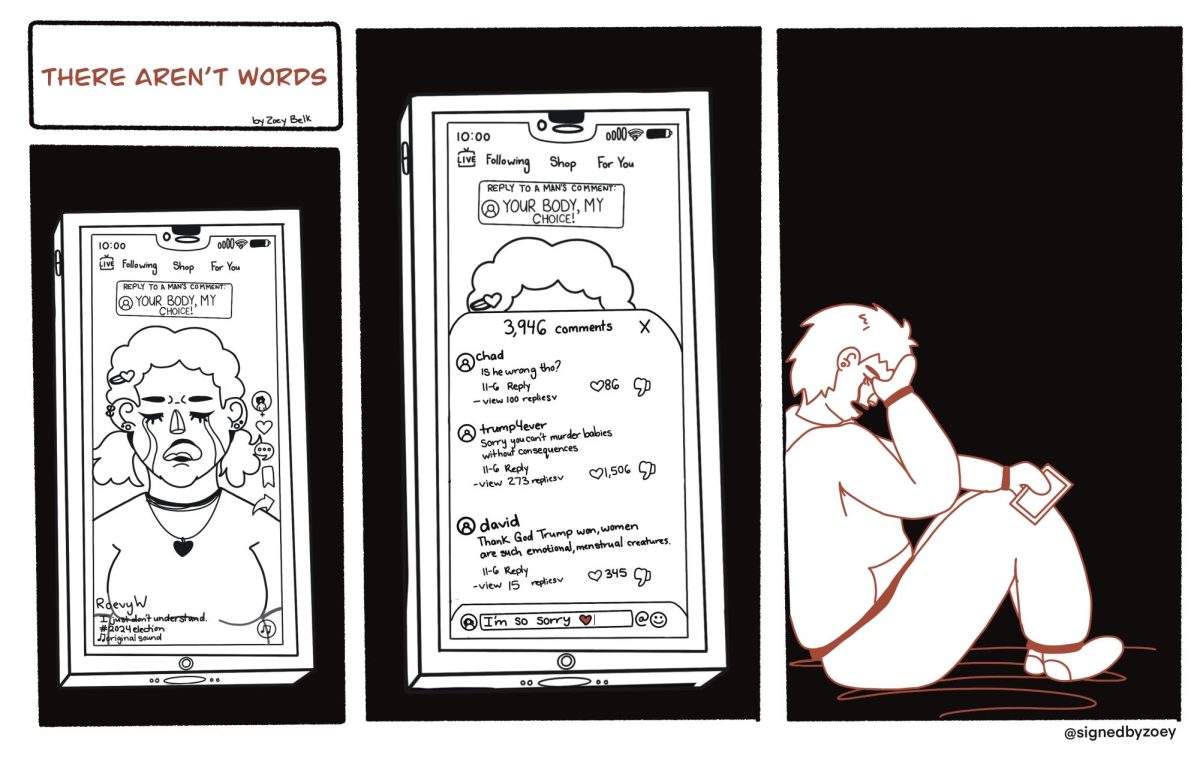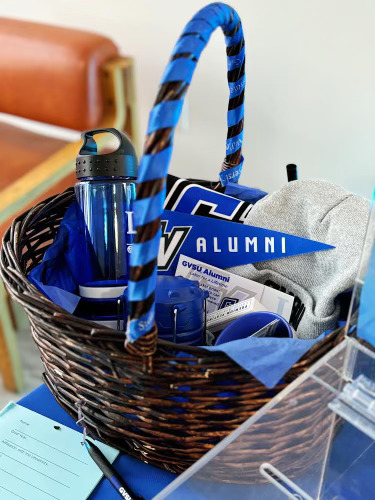Student Nurses’ Association finds success with mentorship program
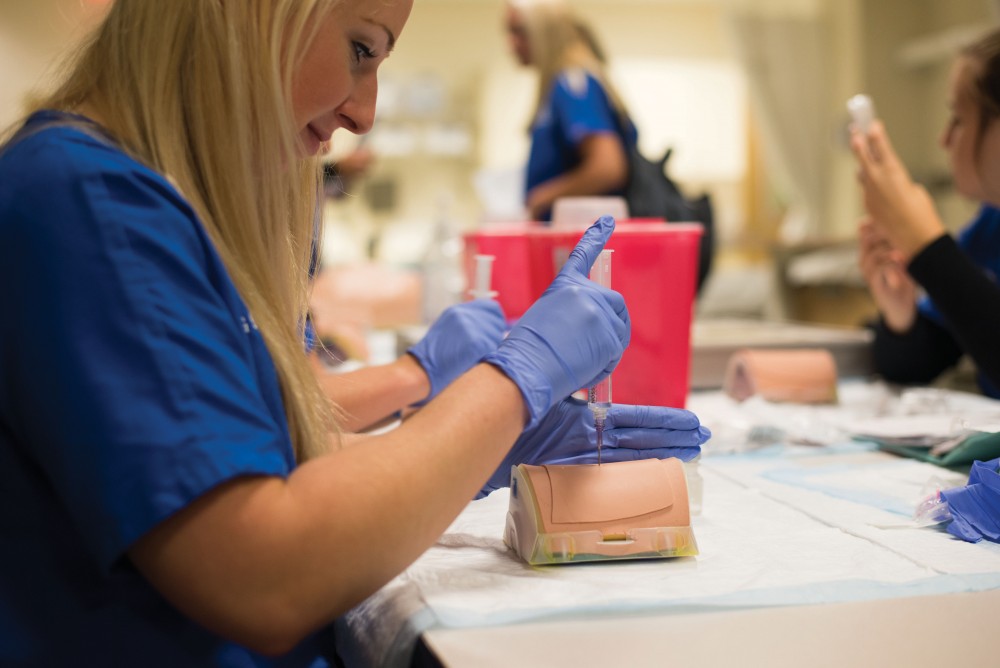
GVL / Luke Holmes – Megan Buchman practices giving a shot to a test dummy in the Center for Health Sciences building downtown on Monday, Sept. 26, 2016.
Nov 6, 2017
The curriculum of Grand Valley State University’s nursing program, as with many majors, demands a lot of hard work and dedication. To help combat the stress of nursing school, the GVSU Student Nurses’ Association (SNA) has been participating in the Transitions Mentorship Program for the past three semesters.
The SNA is a student-run organization that immerses GVSU nursing students into the medical world through presentations, group meetings and hands-on activities. The organization works hard to empower those within the association through their student activities and programs, including the Transitions Mentorship Program.
“The idea behind the program is to empower our new student nurses,” said Jamie Platt, president of the GVSU SNA chapter. “SNA believes that creating a strong environment through positive peer-student relationships during the beginning of nursing school will allow new … students to feel confident during a vulnerable time in the (nursing) program.”
The transitions program pairs lower-level nursing students with upper-level students so they can meet and discuss topics within the major and receive tips for studying for nursing exams. It also offers students someone to lean on while studying in the intensive program.
This program has been incorporated into many SNA organizations, and the GVSU chapter decided to incorporate it last year based on student feedback.
“It was something we took into consideration (after) hearing other nursing students talk about their struggles and how looking back, when they were older nursing students, what they wished they had known to help them in the program,” Platt said.
The nursing program at GVSU spans two and a half years, and the mentorship coincides with this.
“Within our program, there are five semesters,” Platt said. “So, if you are in your first or second semester, you will get paired with someone in their third, fourth or fifth semester.”
The students in the mentorship program are required to meet five times per semester and are encouraged to meet biweekly. After the meetings, the mentors report what they discussed with the mentees during their one-on-one meetings. One of the topics that Chloe Dansereau, SNA curriculum director, has seen a lot of conversation generated about is clinical work.
In nursing school, each semester is half clinical and half classroom-based, meaning half of students’ time is spent in an actual class and the other half is spent in a medical setting. Students are able to practice the skills they have learned in the classroom and also explore different aspects of nursing.
“A lot of students have questions about what their schedule will be like, the expectation for the next round of clinical and things like that,” Dansereau said.
To help improve the program this school year, Dansereau, who helps arrange the mentorship program, plans to host informational sessions with the new mentors so they can learn ways to break the ice with their new mentees and gain new ideas for what to discuss with them.
“Next semester, I (want to) do a little more of an (introductory) training session for the mentors and share with them ideas they can talk about and how to build that relationship (with their mentees),” Dansereau said. “I think it’s really hard to sit down with somebody, and they might not always know what they want to talk about and vice versa, … so to be able to start those kinds of conversations is really important.”
Both Platt and Dansereau have noticed the positive impact this program has had on the nursing students.
“It makes (the nursing students) feel more confident and less apprehensive about continuing to the next semester,” Dansereau said. “I’ve seen a lot of great relationships come out of it. A lot of people request the same mentor again, and I think it’s very impactful.”















